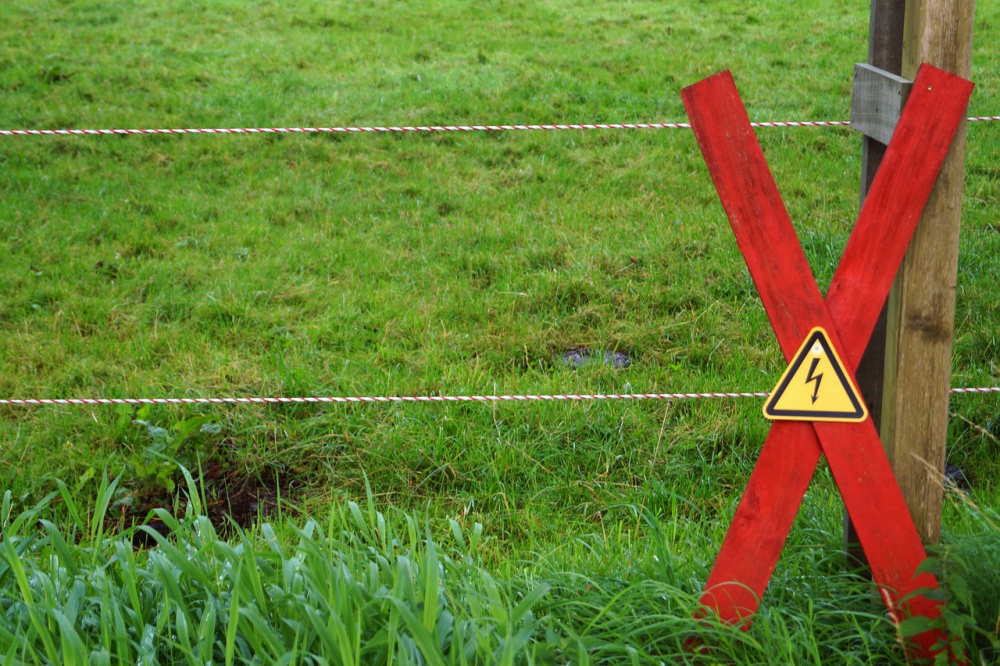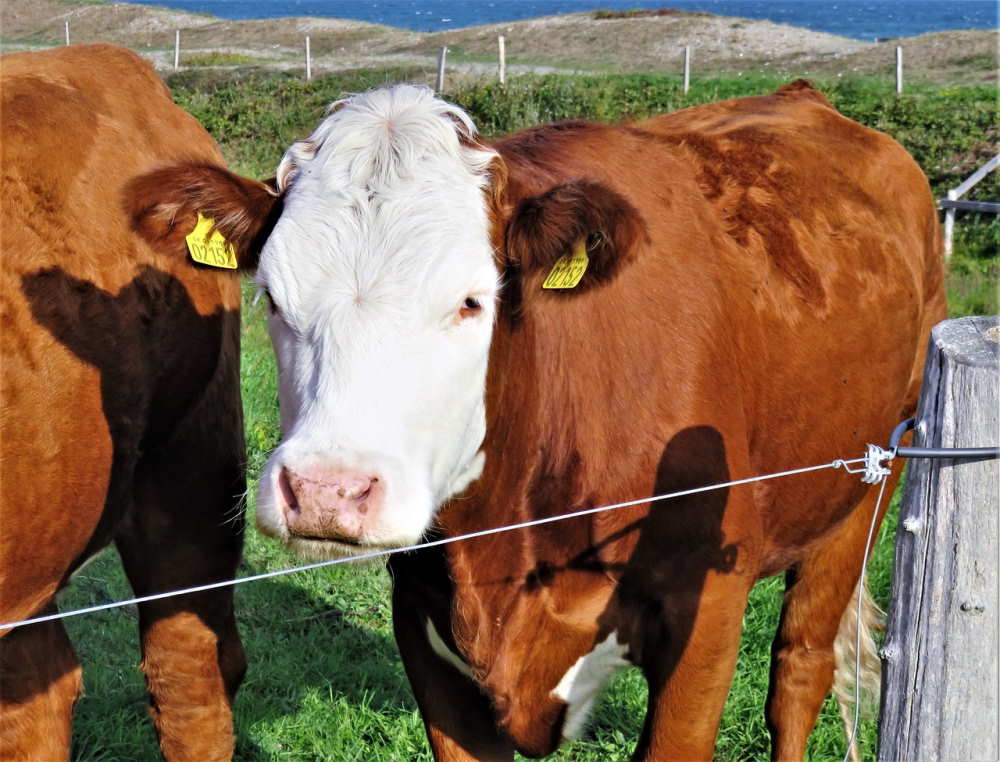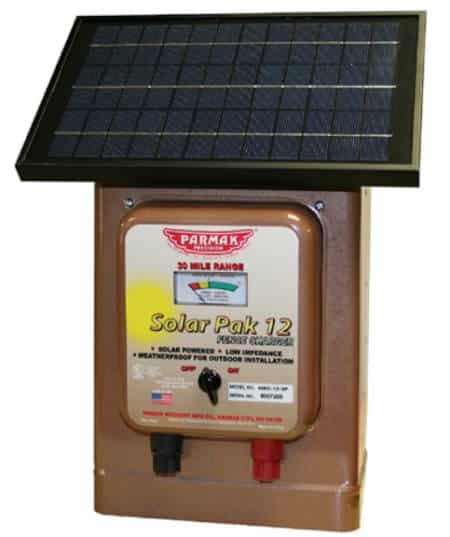Tips and Tricks
To choose the best electric fence wire and power charger

Not many people search for electric fences, but those who are looking for them want to know: what is the best electric fence, what wire types are in use, best electric fence for cattle, or best electric fence for dogs.
Let’s take a quick review and find some answers
Most manufacturers use high-tensile wire either galvanized steel or aluminum. Both wires are strong and self-sustain. Low maintenance and hard-wearing make these wires a great choice for electric fences.
Galvanized steel is an economic solution, and it is mostly used to carry an electric charge on long distances. Using electric fences is a convenient and pretty much cost-effective way to contain livestock, or even keep away wild animals. Aluminum wires are up to four times better conductors than galvanized steel. It is good to evaluate your needs and expenses, to be economic in the long run.

Best wire for electric fence
Different wire materials have different properties. It depends on the purpose of fence installation, to choose the best wire type.
Steel wire fence
- Steel can last as much as fence last
- Carry a charge to long distance with minimal loss
- Any type of charger can fit
Aluminum wire fence
- Relative long lasting
- Conduct electrical charge stronger than steel
- Very flexible material and easy to work with
High tensile wire fence
- Good way to keep predators out even without electrical charge
- Relative long lasting
- Quite effective when electrified
Aluminum could be the best electric fence wire
To choose the best wire fence, you should try aluminum. Well, a known fact is that aluminum wire carrying a charge is better than other wire types. Aluminum conducts electricity even four times better than usual steel wire. Sure it costs more, but aluminum wire won’t rust, and better conductivity means that aluminum wire is much more efficient in the long run. Aluminum wire has 4 times more conductivity than wire made of steel. It is a perfect choice to keep your animals in space. Not just that, the aluminum wire has a lot more flexibility than steel wire which means you can easily bend and tie together one end to another. Aluminum wire is better for a permanent setup using t-posts or wooden posts.
Best Poly fencing options
These are the different wire types. Poly is formed of polymer tape and wires inside. This way the fence is visible, strong, and electrified. Animals can see their space and boundaries much better than using just a single wire.
Polywire fence
- Great visibility for animals
- Easy to reuse if needed
Polyrope fence
- Quite stronger than poly wire fence
- Mostly produced in ¼ inch diameter
Polytape fence
- Highly visible for animals and humans
- Mostly used for horse fencing outdoor space
- Weare and tear resistance
- Tape produced in between ½ inch to 2 inch wide
The best electric fence charger
To choose an electric fence charger (generator) you have to know your fencing needs. Fence chargers provide the source of the electric current, running electricity through the chosen wire fence.
Fence chargers, known as generators or energizers, have to provide enough energy through the whole fence installation.
Needs you must consider (to calculate) are four main factors: length of the fence, number of wires, power source, type of animal being contained or excluded.
Stafix X6i in our opinion is the best electric fence charger for livestock such as cattle or goats. It is also designed for a bigger area of land keeping safe livestock. It is recommended to use approximately 1 joule of output per mile of fence, no matter how many strands of wire you’ll use. If there’s a total of six miles of fence, it requires a minimum of a 6-joule energizer.
How high should an electric fence be for cows? Experts recommend 40 inches tall fence. A cattle fence should be at least 40 inches in height.
To find the best electric fence charger, maybe consider these models. We are going to write a short review of some electric fence chargers. We can’t say these are the best, but it is worth looking at them and making a choice.
Stafix X6i short review
This one doesn’t come for cheap. Electric fence charger Stafix X6i boasts a remote control, which can be a handy option for many. This is a convenience that just might be worth the money you’ll pay. Electric fence charger Stafix X6i can be controlled from a distance, and you don’t have to walk all the way to the main unit. You can turn it on or off by just using the remote control. Maintenance and repairs are easy to do, and there is no worry about unpredictable failures. This unit can be solar powered which is great, and there is an LCD with a backlight for easy use, with good visibility.
Parmak Magnum review
This electric fence charger brings extra security and reasonable utility bills. The Parmak Magnum is a practical solution with a solar power strong enough to electrify up to 30 miles of fence. Solar power works with a 12V battery which ensures continuous cattle grouping even in cloudy weather. Durable housing and quite a heavy main unit ensure a long lifetime.
Brings you the latest state-of-the-art solar panel with superior charging power. This way you save your time and money, by eliminating battery recharging. The battery is charged automatically, using just the sun’s energy. The sun energy is used to charge the fencer by day while the integrated 12-volt rechargeable battery powers the fencer at night. The Magnum 12 Solar-Pak was designed, developed, and is manufactured exclusively by Parmak. This product is 100% American-made.
Gallagher M300 review
Gallagher M300 is powerful to stop big animals from entering your property. To keep intruders out of your land, and keep your cattle safe inside, M300 from Gallagher is a good electric fence charger. It works in arid climates, is easy to service and maintain, and brings status lights to watch his working mode.
Check price on AmazonTo choose right fence charger consider the following
How to power your fence charger? The most recommended and reliable choice is an AC-powered charger. To operate in a remote area, consider using a DC or solar-powered fence charger. Keep in mind that solar fence chargers operate like DC, it charges batteries using solar panels.
If using a steel wire fence find an appropriate high impedance fence controller. The same rules apply if using aluminum wire fences. On the other hand, for using polywire, rope or tape, find an appropriate low impedance fence controller.
Electric Fence Installation Guide
Building a fence requires skilled workers, tools, and quality materials. Try to use proper construction techniques while you are doing this job. Now, let’s get to learn how to install fence wire.
Fence wire installation
The steps you will need to take can vary with the type of fencing you have chosen to suit your needs. Our instructions are meant to only guide you into the basic concept of building a fence.
Running and securing a wire
Wire height, spacing, and the number of wires you’ll use depend on the usage and animals you are facing. Therefore, wires can be run from different sources: the coil or roll using a payout spinner. You’ll need crimping sleeves and appropriate knots to secure wires to the corner end, and gate posts. Each wire should be strung on the inside of line posts and the outside of curves. The electrified wire will require insulators for fastening to posts. Be sure to spread staples, not to drive them too deeply as the wire must still be able to slide through the staples for adjusting tension.
The amount of weight needed to tension wire depends on the type of wire chosen. High-tensile wire is typically tensioned to approximately 200-250 pounds. Take care not to apply too much tension to wires, as excessive tension will damage the wire or the isolation, and may lift fence posts out of the ground in low spots.

























